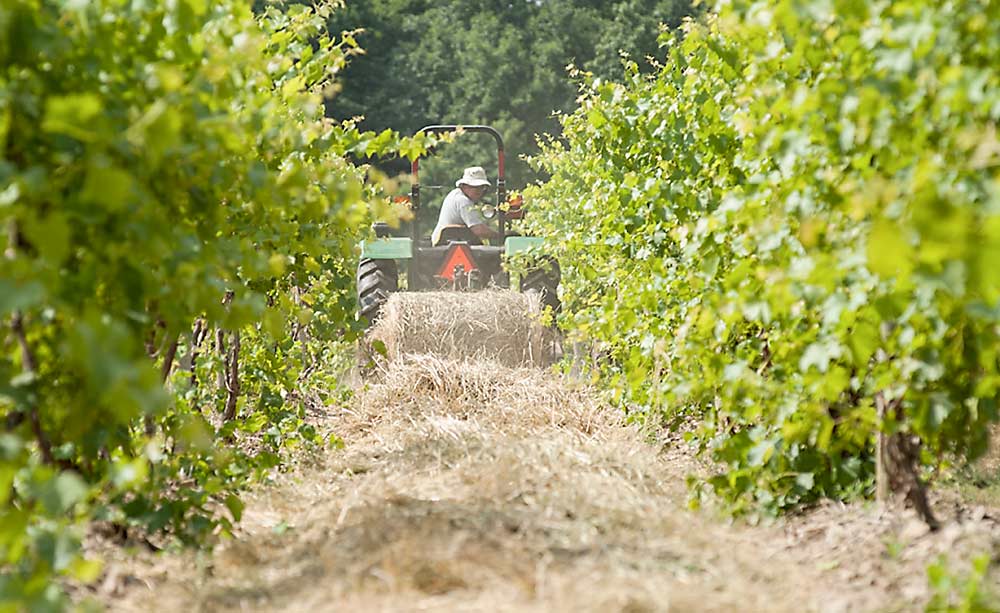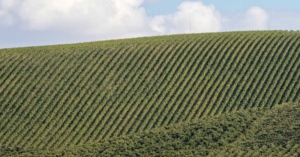
The New York viticulture industry’s attempts to create a statewide sustainability certification program moved in fits and starts over the past decade or two, but the latest effort appears to be gaining momentum.
Sam Filler, executive director of the New York Wine & Grape Foundation, has been overseeing the creation of a third-party certification program to recognize growers’ sustainable practices. In April, the foundation was creating a business plan and planning to hire a program manager. The goal: Recruit 25 to 50 growers within the next two years and scale up to a statewide program within five years.
The program will initially focus on wine grape growers, but juice grape growers eventually will be eligible.
Filler said “sustainability” will encompass two broad ideas. First, the certification will examine how the vineyard affects the surrounding ecosystem — including soil, water and wildlife. Second, a social justice component aims to drive sustainable business practices that prioritize worker health and safety and the economic well-being of the surrounding community.
“It’s important for the future of our industry to formalize this,” he said. “When someone opens a bottle of New York wine, we want to make sure the value system of the industry is a driving motivation — because we’re ethical in our growing practices, we treat our workers well, we’re good to the environment, we’re a good community steward.”
The certification program’s standards will be based on VineBalance, the sustainable viticulture practices guide created by Cornell Cooperative Extension in the mid-2000s. The new program will update VineBalance’s recommendations and incorporate them into a formal structure, Filler said.
“Any certification program needs to come out of industry and be led by industry,” said Timothy Martinson, a CCE senior extension associate and part of the team that developed VineBalance. “We can support these efforts by providing technical information about best management practices.”
Filler said the original attempt to turn VineBalance into a statewide certification program was derailed in 2008 by the Great Recession. After the statewide effort fell through, Long Island grape growers decided to create their own program, called Long Island Sustainable Winegrowing. The success of that regional effort “fired up” the rest of the industry to make another run at a statewide certification program, he said.
As for financial incentives, consumer research has shown that millennial and Generation Z buyers will pay an extra $3 or more per bottle if it includes a sustainability label. It’s also hard to export wine to Europe without some sort of sustainability standard, he said.

Long Island
There are roughly 60 wineries on Long Island and 1,815 acres of vineyards. Twenty-four of the wineries (representing 1,025 acres) have joined Long Island Sustainable Winegrowing, which certified its first vintage in 2012, said program manager Whitney Beaman.
“Wine and grape growers wanted a credible way to tell consumers that they’re using environmental best practices when growing grapes,” she said. Before the new group was created, “there wasn’t an option for that.”
Participating growers pay an annual assessment to fund the program ($500 per year for the first two years, $300 per year after that). A conservation specialist provides the third-party verification. To put the sustainability label on their bottles, growers must meet the minimum score in the VineBalance workbook each year and pass an on-site inspection every three years, Beaman said.
She listed a few of the VineBalance practices the program follows: Participants can only use pesticides considered safe for the environment, and the number of sprays is limited; a portion of each vineyard must be set aside as a habitat for native wildlife; cover-cropping is emphasized to prevent erosion; pomace, thinned fruit, pulled leaves and pruning wood should be composted.
The Long Island group has made some regional modifications, too. The island’s soils are sandy and well drained, and it has a single-source aquifer, which makes the protection of groundwater crucial, Beaman said.
Finger Lakes
New York state’s largest concentration of wineries — about 150 with more than 10,000 acres of grapes among them — sits in the Finger Lakes region. A lot of property owners along the lakes worry about farming’s effects on water quality. A statewide sustainability program would communicate to neighbors that vineyard owners care about the environment, Martinson said.
Suzanne Hunt, co-owner of Hunt Country Vineyards and an environmental consultant, has been advocating for the creation of a statewide sustainability program for years. It would benefit Finger Lakes wineries such as hers and reassure consumers who want to know which wines are sustainably made, she said.
Hunt Country Vineyards has implemented a “whole suite of sustainability practices,” she said. It installed hundreds of solar panels and a geothermal heating and cooling system for its buildings. It uses hundreds of tons of compost and biochar. It provides free electric vehicle charging for its customers. It has reduced single-use plastics and enhanced pollinator and other wildlife habitat, Hunt said.
But how is a typical consumer in a liquor store supposed to know about all that? A quick, easy way for them to learn would be reading a verified sustainability label on the bottle, she said.
“There’s a lot of committed growers ready to sign up once this is launched,” she said. •
—by Matt Milkovich







On a relaxing Sunday morning , I decided to open up my email as usual and came upon this article of sustainability. I was very intrigued. The information not only opened my eyes to the whole concept of Vineyards being a community steward but gave me Hope. It was so refreshing to read some very positive and great news. And I learned something today! Thank you Wine Growers of Long Island and especially of The Finger Lake Region where I frequent. Thank you Susan Hunt of Hunt Vineyards ! I am so proud to be a honorary Wine Club Member of Hunt Vineyards!